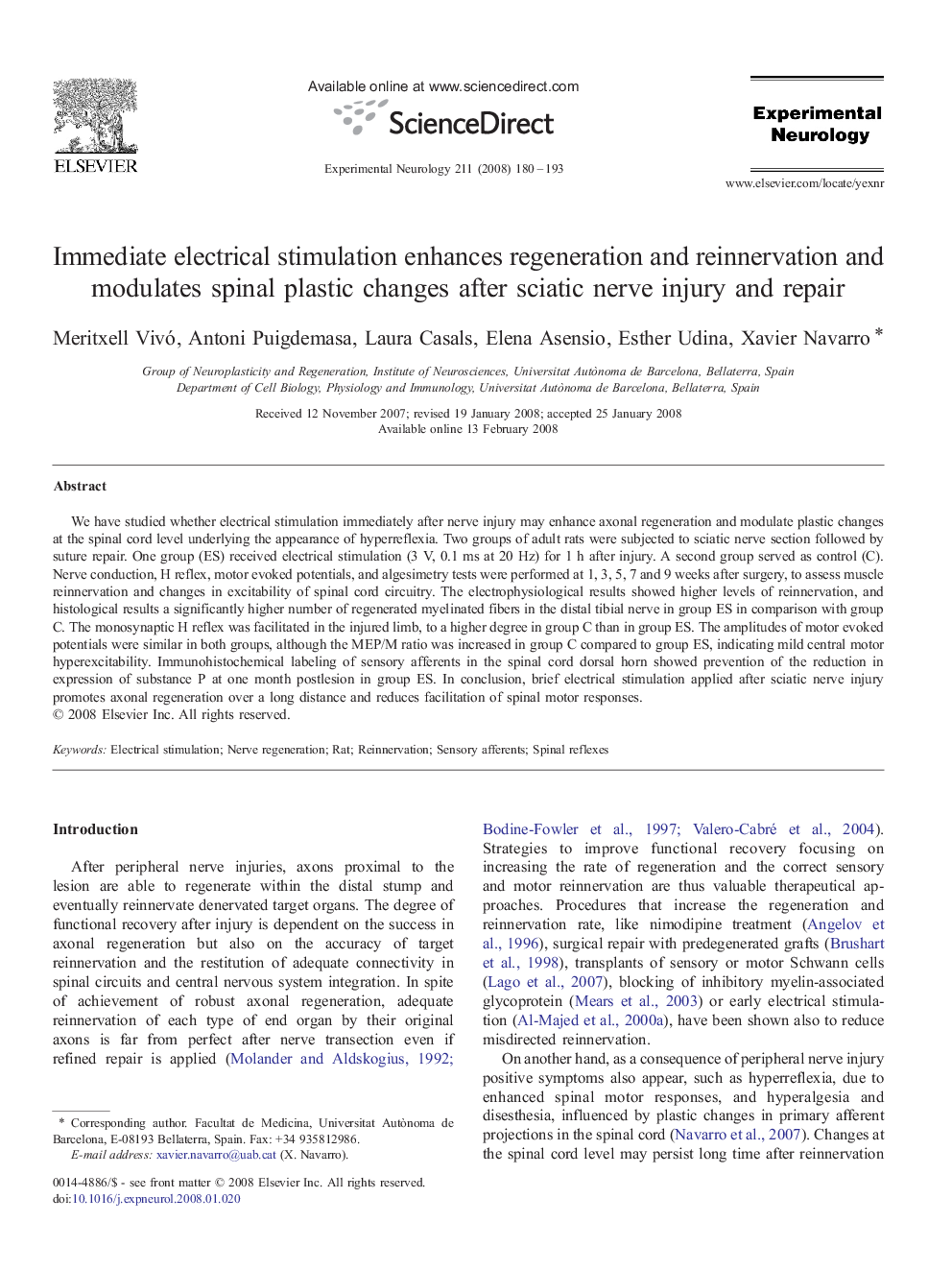| Article ID | Journal | Published Year | Pages | File Type |
|---|---|---|---|---|
| 3056668 | Experimental Neurology | 2008 | 14 Pages |
We have studied whether electrical stimulation immediately after nerve injury may enhance axonal regeneration and modulate plastic changes at the spinal cord level underlying the appearance of hyperreflexia. Two groups of adult rats were subjected to sciatic nerve section followed by suture repair. One group (ES) received electrical stimulation (3 V, 0.1 ms at 20 Hz) for 1 h after injury. A second group served as control (C). Nerve conduction, H reflex, motor evoked potentials, and algesimetry tests were performed at 1, 3, 5, 7 and 9 weeks after surgery, to assess muscle reinnervation and changes in excitability of spinal cord circuitry. The electrophysiological results showed higher levels of reinnervation, and histological results a significantly higher number of regenerated myelinated fibers in the distal tibial nerve in group ES in comparison with group C. The monosynaptic H reflex was facilitated in the injured limb, to a higher degree in group C than in group ES. The amplitudes of motor evoked potentials were similar in both groups, although the MEP/M ratio was increased in group C compared to group ES, indicating mild central motor hyperexcitability. Immunohistochemical labeling of sensory afferents in the spinal cord dorsal horn showed prevention of the reduction in expression of substance P at one month postlesion in group ES. In conclusion, brief electrical stimulation applied after sciatic nerve injury promotes axonal regeneration over a long distance and reduces facilitation of spinal motor responses.
